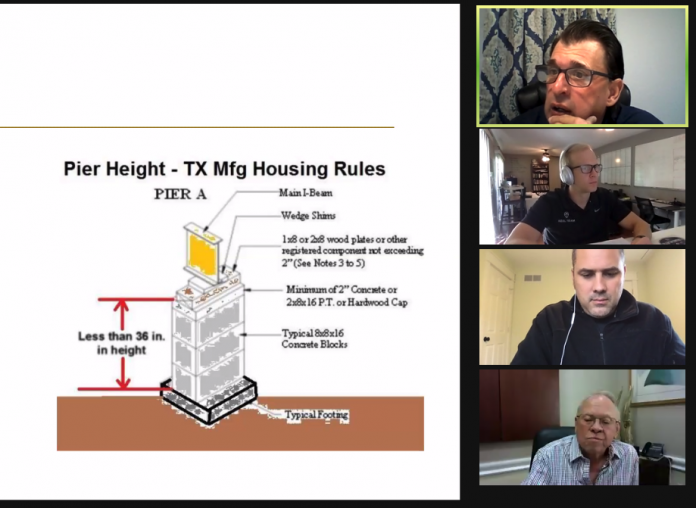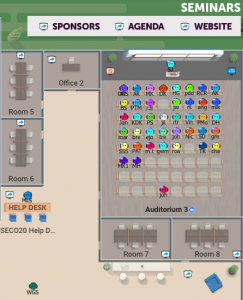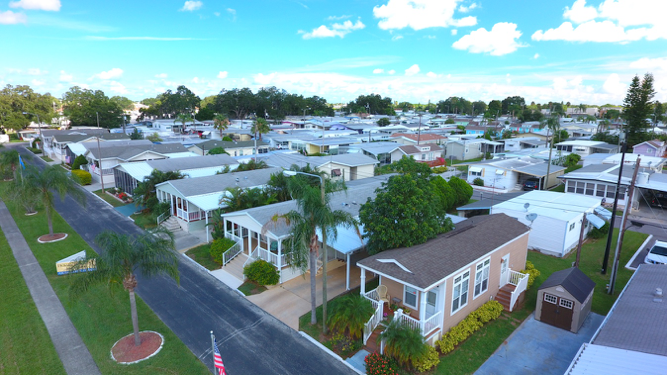
The First-Ever Virtual SECO Conference Provides Platform for Industry Learning
A sold-out SECO20 held on a virtual platform is hosting 500 manufactured home community owners and other industry professionals for much-needed networking and professional guidance and sharing.
SECO, hosted each year for a decade in the Atlanta area, moved to virtual platform in partnership with MHVillage. The event opened with a welcome and thank you address by country music star and entrepreneur John Rich and moved into specialized programming on Manager Monday before kicking off in earnest Tuesday morning.
Tuesday at SECO20 from Installers to Attorneys

SECO provided guidance to community owners in a variety of ways during the first full day of programming at the annual event. There were presentations and panels for manufactured housing professionals that covered marketing principles, legal obligations, community valuation, sales strategies, and plenty more.
Andrew Keel from the Keel Team moderated a session on home delivery and installation hosted by Shawn Fuller of Tiny House Outlet of Lubbock, Texas, who offered up what to do and not to do in getting homes delivered and installed.
Find An Installer You Trust

A licensed and dependable installer is a person who is worth their weight in gold, especially during the limitations in the pipeline for products and services during the pandemic and COVID-19 restrictions.
“If you go out and try to learn every bit of information from every installation manual you’re going to waste a lot of time,” Fuller said. “You need to have someone who knows what they’re doing, but if they need to look something up, they can, they know where they need to go.”
In the state of Texas and in other locales, installers are able to operate without a license. However, it’s buyer beware. And an unlicensed contractor still would need to file an unlicensed installer form with the state or local governing entity.

Foundation is Everything
“I’ve seen installers take not great homes and put them on really good foundations and they will last a long, long time. I’ve seen ponding or negative drainage under any kind of home and it’s not going to work out,” Fuller asserted.
Know the number of piers you need for a given home. Each pier can hold about 8,000 pounds and with the proper array of piers, there’s no more than 3,500 pounds on each one of those piers even if there’s a greater than a 6-foot span between piers.
And, to this end, Fuller defended the installation manual as a resource when needed.
“A lot of people don’t know that there is an installation manual in every home, there has to be, it’s required,” he said. “Open up a few drawers, find one of those things and take some time to read it. Pick a lazy Saturday or a rainy day and just take some time to give it a look.”
Make sure your cap is level with or in the topsoil, and that there are enough bolts to secure the arm between piers, regardless of whether they are 6 or 8 feet apart.
“In my experience, that’s the number one failing inspectors I know see in the field,” Fuller said.
And be aware, Fuller said, if you have to replace one pier, you need to get a new inspection, which means the entire setup needs to meet code.
Think Foundation, Consider the Pan
A pan section sets into the ground under a home and ties to each side of the structure so when the wind blows high from any direction, it digs in and stabilizes the entire structure.
Texas Tech University did a manufactured home experiment with a C-130 transporter jet plane for 15 minutes and couldn’t move the house.
“It because they had a pan system,” Fuller said. “The only thing they were able to do was to move some of the shingles and some fascia, and they weren’t able to do what they wanted to do, which was roll the house over.”

Give Added Space for Trees
The rules vary by state and locale, but it’s important to know what type of trees you have and how they root for water.
“Most people will say you want 15-foot clearance, but Sean says 25-30 feet,” Fuller told the audience, referring to himself. “We have elm trees out here in Lubbock, Texas, and some people call them shrub trees. We call them shade trees, but their roots will go about as far as they need to go to get a source of water.”
Recycle Odd or Outdated Parts
Set tires and axles aside, for instance, from installed homes for a recycler. It may seem an easy thing to pass on, but if you value you bottom line, pad it to whatever degree you can.
“They will come to you pick that stuff up and give you a receipt and cash,” Fuller said about a metals and materials recycler. “There’s a lot of nickels in that picture.”
The installer shouldn’t get paid until after the inspection clears
Tie Downs for Every Home
“Every home has to have tie downs,” Fuller said in answering a question during the session’s Q&A. “Whatever you’re building it’s hard to find guys to do hard labor. You may have to use a little bit of this smile you’ve got. It may not be a fun job, but buy pizza for the boys that day. The good guys will come out and help with tie-downs and whatever else is needed.
“If it’s in your park you should tie it down,” he said. “If it’s a tiny home, or a park model, tie it down. If it’s an RV, if you have those in your park, I will give that one to you.”
But maybe tie it down.
Keep Records, Documentation, Contracts
There are records on the home that must be kept, but community owners also should keep records and documentation for everyone who touched that house.
“When the wolves come and knock on the door, you can say here is all of my documentation,” Fuller said.
Visit MHInsider for more manufactured housing news and information on future manufactured housing industry events, trade shows, and conferences.






